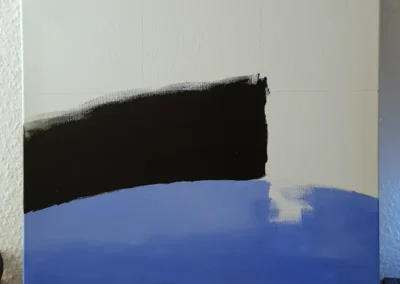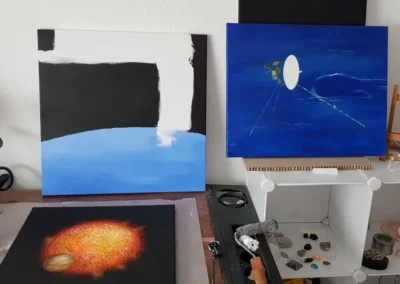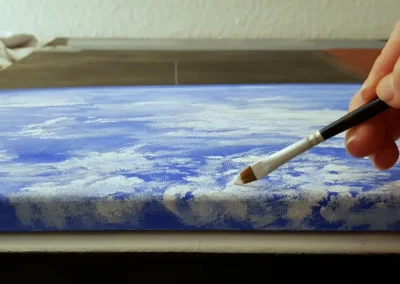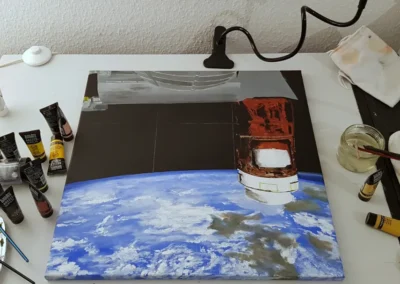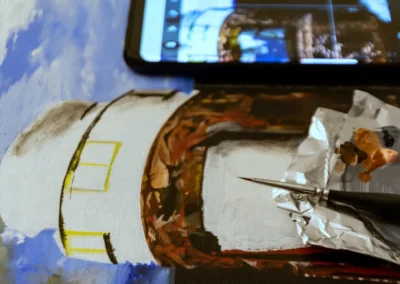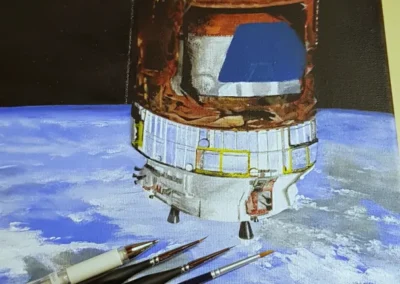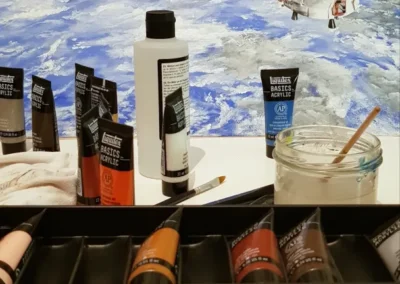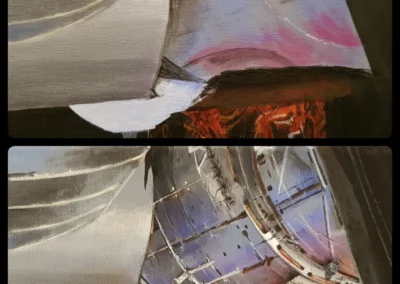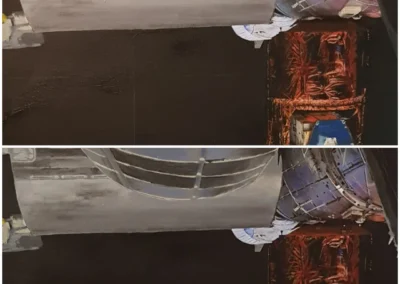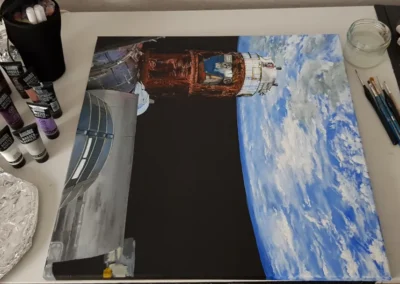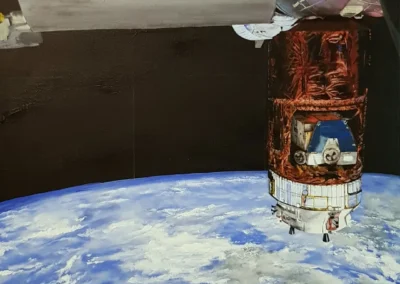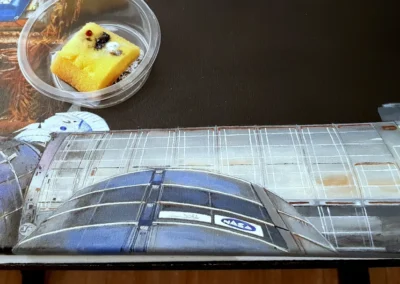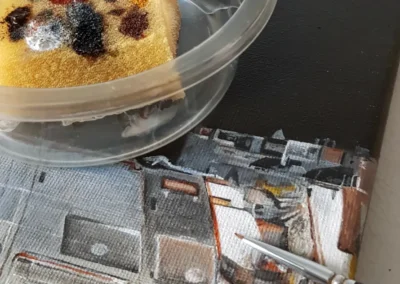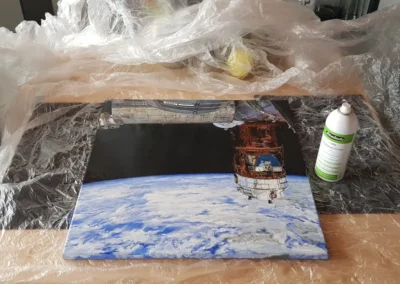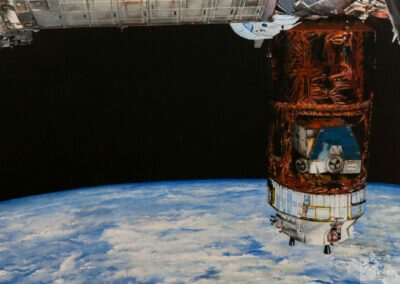Now that everything is all about Tibor Kapu (to our great joy! ![]() ), I’d like to share an earlier painting of mine, along with some interesting facts I’ve gathered.
), I’d like to share an earlier painting of mine, along with some interesting facts I’ve gathered.
This painting depicts the Crew Dragon capsule Endeavour from the Demo-2 mission, already docked to the International Space Station. (Based on its shape and structure, it qualifies as a space capsule—it has a heat shield, can carry humans into space and return them safely. At the same time, it’s technically also a spacecraft, since it can maneuver autonomously, dock on its own, and support human life in orbit).
This was the first crewed spaceflight launched from U.S. soil since the Space Shuttle program (officially STS – Space Transportation System) ended in 2011.
The names of Crew Dragon spacecraft are usually chosen by SpaceX, Axiom Space, or most often by the astronauts themselves. This latter tradition dates back to the Mercury–Apollo–Shuttle era, of course subject to official approval. During the Gemini program, on the other hand, NASA only used numbers—reflecting a more practical, military mindset. Gemini was designed to prepare for Apollo, so the astronauts’ individual “branding” wasn’t in focus at the time. (Side note: the Apollo 11 crew originally proposed naming their spacecraft Snowcone and Haystack, which NASA promptly rejected, saying, “The first crewed Moon landing is not a joke.”)
Back to the Demo-2 mission:
Choosing the name, Endeavour was also personal—both Bob Behnken and Doug Hurley had previously flown on the Space Shuttle, and both made their first flights on Endeavour. By naming the capsule this way, they paid tribute to the shuttle. (Incidentally, Apollo 15’s command module was also called Endeavour).
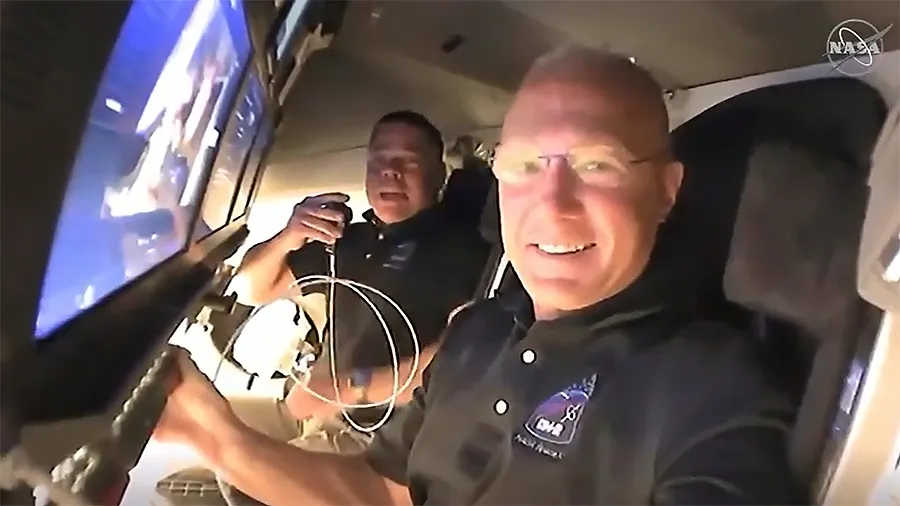
Doug Hurley and Bob Behnken on board Endeavour during the Demo-2 mission. Image source: NASA
After the first test flight, the Crew Dragon capsule capacity was increased from two astronauts to four.
And now—almost exactly five years later—we were finally able to cheer for a Hungarian astronaut, from launch all the way to splashdown. This mission was not organized by NASA, but by Axiom Space—a private company that conducts commercial spaceflights. These missions typically involve shorter stays aboard the International Space Station, with clearly defined research and educational goals.
The capsule used, however, is the same type, although not the same unit. The Endeavour capsule is now a veteran, with five flights under its belt. The capsule that carried Tibor (alongside Peggy Whitson, Shubhanshu Shukla, and Sławosz Uznański-Wiśniewski) was on its very first mission. That’s why they had the honor of naming it: Grace. The name “Grace” evokes dignity, gratitude, and also the beauty of shared human endeavor. (This symbolism is especially meaningful to me—it’s a very uplifting and forward-looking message.)
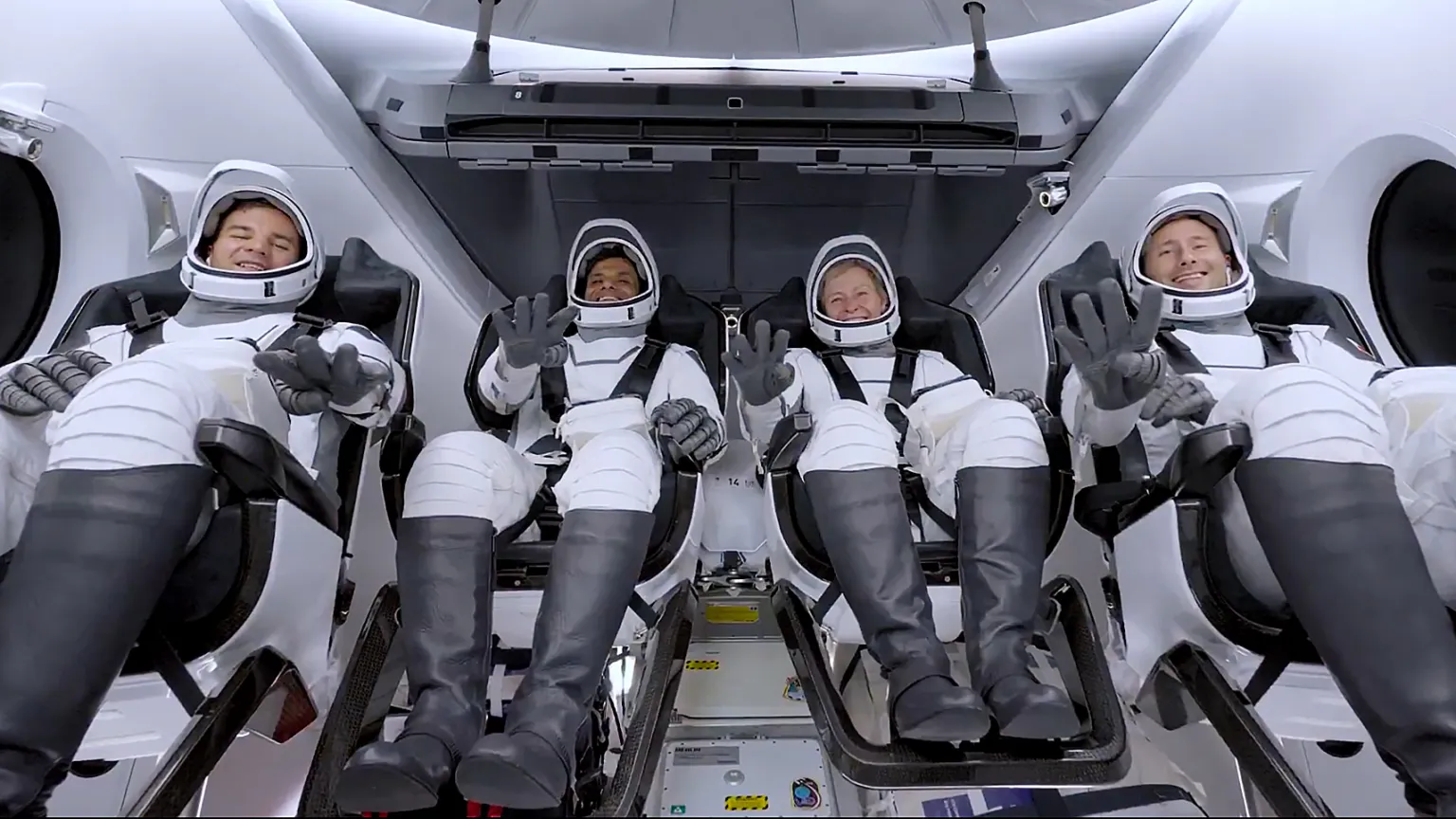
Members of the Axiom-4 mission in the Crew Dragon spacecraft. Image source: NASA
A few improvements since the first Crew Dragon:
- Reinforced heat shield
- Upgraded parachutes
- More precise sensors
- Ability to relocate between docking ports
- Longer orbital stay duration
- New safety systems
- Even greater reusability
So far, five different capsules have been used in a total of 18 crewed missions. Of these, 11 were NASA missions, and 7 were private or commercial (Axiom, Inspiration-4, Fram-2). Here’s a breakdown of the capsules and their missions:
- Endeavour: Demo-2, Crew-2, Ax-1, Crew-6, Crew-8
- Resilience: Crew-1, Inspiration4, Ax-2, Fram-2
- Endurance: Crew-3, Crew-5, Crew-7, Crew-10
- Freedom: Crew-4, Ax-3, Crew-9
- Grace: Ax-4
As for the painting process—well, it was less thrilling than the story behind it, especially since it was based on a photo. So instead of a full walkthrough, I’ve put together a short visual summary of the steps. The original photo—an absolutely stunning shot—was taken by Bob Behnken aboard the ISS. In it, you can see the Crew Dragon capsule, the Harmony module, and the Japanese HTV-9 cargo spacecraft (which had just arrived a few days earlier), weighing 12 tons and delivering supplies.
The idea for the subject wasn’t originally mine either—but I hope that with some imprecision and freestyle brushstrokes, I was able to add a new kind of experience for the viewer. For me, it was definitely an experience—especially when I look back now and remember how I thought I wouldn’t be able to pull off this level of detail.
But—I did it! ![]()
![]()
Thank you for looking and reading!
Ref photo: NASA, Bob Behnken
